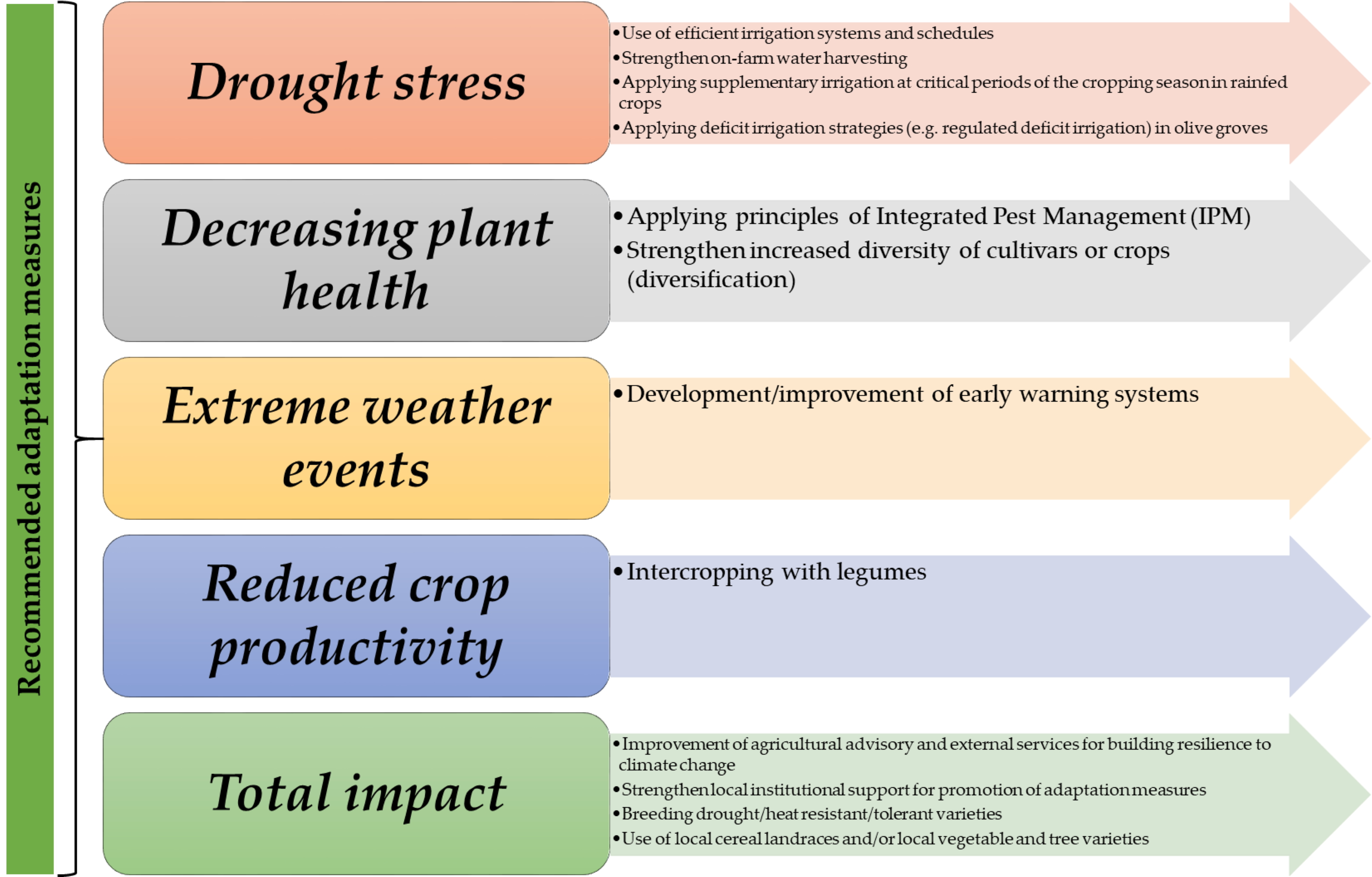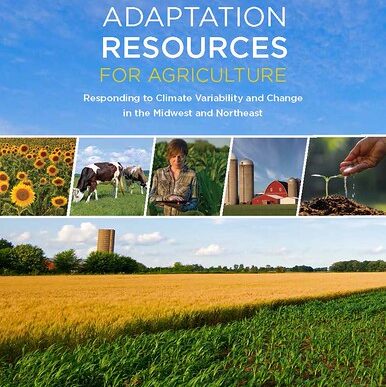Crops are profoundly influenced by the climate, with variations affecting their growth and yield. Climate change is reshaping agricultural practices and crop selection worldwide.
In the realm of agriculture, climate plays a decisive role, determining not only the types of crops that can be cultivated in a given region but also the productivity and sustainability of farming practices. As the climate shifts, farmers and scientists alike are grappling with challenges such as extreme weather events, including floods and droughts, which can devastate crops and impair food security.
With increasing concerns about food supply under changing climatic conditions, research into crop resilience and the development of climate-smart agricultural strategies has become crucial. Certain crops thrive in specific climatic zones, for instance, rice in tropical climates and wheat in cooler, temperate regions. Understanding and optimizing these relationships is vital for maximizing yields and minimizing environmental impact. As a result, the study of crops and climate is essential for foreseeing future agricultural trends and ensuring that our food systems remain robust in the face of climatic uncertainty.
- Introduction To Climate Change And Agriculture
- Understanding The Agricultural Climate Zones
- Crops Most Vulnerable To Climate Change
- The Effects Of Temperature And Precipitation Shifts
- Adaptation Techniques For Crop Cultivation
- Technological Advances In Climate Adaptation
- The Role Of Soil Health In Climate Adaptation
- Water Management In A Shifting Climate
- The Impact Of Climate Change On Pest Dynamics
- Economic Implications Of Climate On Farming
- Policy And Climate: Mitigation Strategies For Agriculture
- Case Studies Of Successful Climate Adaptation
- Extending Growing Seasons And Crop Variability
- Agriculture's Footprint: Contribution To Climate Change
- The Global Food Supply Chain And Climate Change
- Climate Change Education For Farmers
- The Psychology Of Farming In A Changing Climate
- Advocating For Climate Resilience In Agriculture
- Technology And Innovations In Climate Monitoring
- Conclusion: The Future Of Farming In A Warming World
- Frequently Asked Questions For Crops And Climate
- Conclusion
Introduction To Climate Change And Agriculture
Introduction to Climate Change and Agriculture
Agriculture stands at the crossroads of human innovation and environmental sustainability. It plays a pivotal role in feeding the global population but, simultaneously, it faces monumental challenges posed by climate change. Fluctuating temperatures, irregular rainfall, and extreme weather events not only threaten our ecological balance but also put our agricultural systems to the test. In this conversation, we delve into how climate dynamics directly shape the future of farming and food security.
The Link Between Weather Patterns and Crop Yields
The Link Between Weather Patterns And Crop Yields
Weather patterns exert a profound influence on agricultural productivity. Temperature fluctuations, precipitation variability, and extreme events such as droughts and floods can significantly alter crop yields. Crops have specific climatic requirements; a deviation from these can lead to reduced yields or, in some cases, total crop failure.
For example, wheat thrives in a relatively cool and moist environment. An unexpected heatwave can impair its pollination process, leading to poorer grain quality and smaller harvests. Conversely, rice demands abundant water, and a shortage can hurt its production severely. To understand the magnitude of this dependency, let’s observe a few stark figures:
| Crop | Optimal Temperature Range (°C) | Impact of Deviation |
|---|---|---|
| Wheat | 12-22 | Yields decrease above 22°C |
| Rice | 20-30 | Susceptible to water stress |
| Corn | 18-30 | High heat reduces kernel set |
Overview of How Climate Impacts Farming Practices
Overview Of How Climate Impacts Farming Practices
Climate change is transforming farming practices at an unparalleled rate. Farmers worldwide are compelled to rethink and adapt their cultivation methods to cope with erratic weather conditions. Some climate-induced modifications to farming practices include:
- Shifts in Planting Schedules: To avoid weather extremes, farmers adjust their planting and harvesting times, which can affect the entire agricultural calendar.
- Diversification of Crops: Introducing a variety of crops that are resilient to different climatic stresses helps ensure at least some harvest success.
- Investment in Irrigation: As rainfall becomes unreliable, farmers are increasingly reliant on irrigation systems to stabilize water supply for crops.
- Soil Management: Innovative soil management techniques, such as cover crops and reduced tillage, aim to improve soil fertility and water retention.
- Pest and Disease Control: New pests and diseases emerge in response to climate change, necessitating the adoption of integrated pest management strategies.
These strategies represent just a snapshot of the ongoing evolution within agriculture aimed at bolstering resilience against climate variability. As the climate continues to change, so too must our approaches to cultivating the land and securing food for future generations.
Credit: www.eea.europa.eu
Understanding The Agricultural Climate Zones
In the vibrant world of agriculture, understanding the agricultural climate zones is essential for farmers, agronomists, and enthusiasts alike. These zones are a classification system used to identify specific areas where various crops can flourish based on climatic conditions. The agricultural climate zones include tropical, dry, temperate, continental, and polar regions. Each zone possesses unique characteristics that dictate the types of crops that can be successfully cultivated. Grasping these zones leads to strategic farming practices, sustainable crop production, and ultimately food security. Let’s delve into the characteristics of these zones and the optimal crops for each climate type.
Characteristics Of Different Climate Zones For Crops
The agricultural climate zones each have distinct features that affect crop choice and cultivation methods. Here’s a snapshot of the primary characteristics:
- Tropical Zones: High year-round temperatures with ample rainfall enable continuous growing seasons.
- Dry Zones: Characterized by low precipitation, making water conservation and drought-resistant crops a priority.
- Temperate Zones: Mild summers and cool winters define this zone with moderate rainfall.
- Continental Zones: These regions experience more extreme seasons, with hot summers and cold winters.
- Polar Zones: Short, cool summers and long, harsh winters are typical, limiting the range of suitable crops.
Optimal Crops For Each Climate Type
Choosing crops that align with a region’s climate zone is crucial for achieving optimal yields. Here are the best crops for each climate type:
| Climate Zone | Optimal Crops |
|---|---|
| Tropical | Rice, sugarcane, bananas, cacao |
| Dry | Sorghum, millet, dates, prickly pear |
| Temperate | Wheat, oats, apples, pears |
| Continental | Corn, soybeans, sunflowers, berries |
| Polar | Root vegetables, hardy grains like barley |
Crops Most Vulnerable To Climate Change
As the global climate continues to shift, the agricultural sector faces significant challenges. Certain crops, integral to feeding the world’s population, are particularly susceptible to changing weather patterns and extreme conditions. Understanding which crops are at risk and the underlying reasons can help in driving agricultural policies and research towards sustainability and resilience.
Climate Sensitivity Of Staple Crops Like Corn And Wheat
Corn and wheat stand as pillars of global food security but are significantly sensitive to the vagaries of climate change. These staple crops have specific temperature and rainfall requirements, making them susceptible to yield fluctuations in response to climate variations.
| Crop | Optimal Growing Temperature | Temperature Range for Pollination (°C) |
|---|---|---|
| Corn | 18-21°C | 35-36°C |
| Wheat | 12-22°C | — |
Both temperature extremes and unpredictable precipitation patterns hereby threaten the production of these crops, potentially leading to supply instabilities and price hikes.
Survival Challenges For Crops In Extreme Weather Conditions
Extreme weather events, such as heatwaves, droughts, and floods, pose survival challenges for many crops. The resilience of these crops to such events is determined by their genetic makeup, soil quality, and access to water resources.
- Heatwaves can lead to crop withering, scorching, and reduced pollination rates, particularly detrimental to grain and fruit setting.
- Droughts stress plants due to inadequate water availability, impairing growth and leading to lower yields or total crop failure.
- Floods can submerge crops, deplete soil oxygen and nutrients, and lead to root diseases, eventually destroying the crop.
Strategies to mitigate these risks include developing drought and heat-tolerant crop varieties, improving soil health, and implementing efficient irrigation systems.
The Effects Of Temperature And Precipitation Shifts
Shifting climatic conditions pose significant challenges to agricultural productivity and food security globally. As the planet continues to experience changes in temperature and precipitation patterns, the impacts on crop development and agricultural practices become more pronounced. Understanding these influences is crucial for developing strategies to mitigate risks and adapt farming practices. Let’s delve into the specific effects that extreme temperature and altered rainfall patterns have on crop development and agriculture.
Impacts of Extreme Temperature on Crop Development
Impacts Of Extreme Temperature On Crop Development
Extreme temperatures, both hot and cold, can dramatically impair crop development at various stages. From germination to flowering and fruit setting, each developmental phase requires an optimal temperature range. Temperatures outside these thresholds can lead to reduced growth rates, impaired photosynthesis, and even complete crop failure.
- Germination: Extreme cold or heat can inhibit seed germination. Certain crops will fail to sprout if soil temperature conditions are not met.
- Vegetative growth: Persistent heat may cause heat stress, leading to wilting and stunted growth. On the contrary, cold stress can slow down or even halt growth.
- Reproductive phase: High temperatures during flowering can result in poor pollen viability, leading to reduced fruiting.
- Yield quality and quantity: Ultimately, exposure to temperatures beyond optimal ranges can significantly decrease both yield quality and quantity.
Consequences of Altered Rainfall Patterns on Agriculture
Consequences Of Altered Rainfall Patterns On Agriculture
Changes in rainfall patterns affect agriculture in diverse ways. Altered rainfall patterns can lead to droughts, floods, and irregular water supply, creating uncertainty in crop productivity. The right balance of rainfall is essential for soil nutrient distribution, crop hydration, and overall ecosystem health.
- Drought: Insufficient rainfall can result in water deficits, challenging the growth of crops and reducing yields.
- Flood: Excessive rainfall, on the other hand, can cause flooding, damaging crops, and leading to soil erosion and nutrient leaching.
- Irrigation: Altered precipitation necessitates changes in irrigation practices, impacting water resource management.
Furthermore, inconsistent and extreme rainfall can disrupt planting schedules and increase the prevalence of plant diseases and pests. To address these changes, farmers must adopt water-efficient crops, adjust sowing dates, and implement climate-smart practices such as improved irrigation systems, rainwater harvesting, and drought-resistant crop varieties.
Adaptation Techniques For Crop Cultivation
Faced with the relentless challenges of climate change, farmers and agronomists are constantly seeking innovative solutions to ensure the sustainability and resilience of crop cultivation. Rising temperatures, unpredictable weather patterns, and extreme climatic events can drastically affect crop yields and food security. To counter these effects, specific adaptation techniques are crucial for the survival of agriculture in a rapidly changing climate.
Climate-smart Agricultural Practices
Climate-smart agriculture (CSA) is an integrated approach to managing landscapes—cropland, livestock, forests, and fisheries—that addresses the interlinked challenges of food security and climate change. CSA aims to achieve three main objectives: sustainably increase agricultural productivity, adapt and build resilience to climate change, and reduce greenhouse gas emissions where possible.
- Water Management: Techniques such as drip irrigation and rainwater harvesting optimize water use.
- Soil Health: Practices like reduced tillage and cover cropping enhance carbon sequestration and soil structure.
- Integrated Pest Management: Balancing the use of biological, mechanical, and chemical measures to manage pests reduces reliance on harmful pesticides.
- Agroforestry: Incorporating trees into farming systems can provide shade, shelter, and nutrients to crops.
- Diversification: Rotating crops and cultivating a variety of species reduces susceptibility to disease and pests, enhances soil fertility, and can improve dietary diversity.
Genetic Modification And Breeding For Climate Resilience
Breeding crops with enhanced genetic traits offers a proactive approach to climate resilience. Scientists use both traditional breeding techniques and modern biotechnology to develop plant varieties that can withstand extreme weather, resist diseases and pests, and maintain yields under various climatic stresses.
Genetic modification (GM) technology facilitates the direct manipulation of an organism’s DNA to achieve desired traits, such as drought tolerance or heat resistance. Conversely, conventional breeding involves crossing varieties of the same or closely related species over several generations to select for naturally occurring traits.
| Characteristic | GM Crops | Conventional Breeding |
|---|---|---|
| Speed | Faster development of new varieties | Slower development; multiple generations |
| Precision | High precision in selecting traits | Less precision, relies on natural variation |
| Biodiversity Impact | Potential to preserve biodiversity by reducing the need for agrochemicals | Supports biodiversity through diverse gene pool |
| Climate Resilience | Can be engineered for specific climate-related traits | Selection for varieties that are naturally resilient over time |
Enhancing crop resilience through genetic modification or traditional breeding methods constitutes a vital component of an overall strategy to future-proof our agricultural systems against the imminent impacts of climate change.
Technological Advances In Climate Adaptation
In the face of climate change, farmers and agricultural scientists are constantly seeking new ways to ensure crop resilience and food security. Technological advances play a pivotal role in climate adaptation, equipping farmers with the tools and knowledge they need to tackle the unpredictable elements. From predictive analytics to precision agriculture, these innovations are paving the way for more resilient agricultural systems that can thrive under a variety of environmental conditions.
Utilization Of Predictive Models For Farming Decisions
Predictive models have become invaluable in the agricultural industry, enabling farmers to make informed decisions based on data-driven insights. These models can forecast weather patterns, predict pest outbreaks, and even determine the optimal time for planting and harvesting. With the integration of machine learning and AI, predictive models evolve continually, becoming more accurate as they learn from new data.
- Weather prediction: Crucial for planning irrigation and protecting crops from extreme events.
- Pest and disease outbreak forecasts: Allow preemptive measures to protect crops.
- Yield predictions: Assist in financial planning and resource allocation.
Role Of Precision Agriculture In Adaptation Strategies
Precision agriculture is at the forefront of climate adaptation strategies. It uses detailed farm data to manage agricultural practices effectively. By applying inputs like water, fertilizer, and pesticides in precise amounts and at precise locations, farmers can significantly reduce waste, increase crop yields, and minimize environmental impact. Technologies such as GPS-guided tractors, drones, and sensors are crucial components of this smart farming approach.
| Technology | Benefits |
|---|---|
| GPS-guided equipment | Increases efficiency, reducing fuel and labor costs |
| Drones | Provides aerial imagery for monitoring crop health |
| Sensors | Monitors soil and crop conditions, optimizing inputs |
The Role Of Soil Health In Climate Adaptation
Soil health stands as a critical player in the grand scheme of climate adaptation for crops. A robust soil ecosystem not only supports diverse plant life but also fortifies our crop systems against the unpredictable whims of climate change. Healthy soils are teeming with life and rich in organic matter, enhancing the resilience of crops to extreme weather events such as droughts and floods. As the backbone of agricultural productivity, soil health is intricately linked to the wellbeing of our ecosystems and our ability to feed a growing global population in the face of climatic stressors.
Soil Management Practices For Enhanced Resilience
Soil resilience can be significantly bolstered through targeted management practices. Such approaches aim to maintain soil structure, enhance microbial activity, and increase soil organic matter. Key strategies include:
- Cover cropping: Utilizing cover crops to protect soil from erosion and to enhance soil nutrient content.
- Reduced tillage: Minimizing soil disturbance to maintain soil structure and microbial habitats.
- Crop rotation: Diversifying plant species to break pest cycles and improve soil fertility.
- Organic amendments: Applying compost or manure to boost organic matter and microbial diversity.
- Integrated pest management: Employing biological pest control methods to reduce chemical inputs and maintain soil health.
These soil-smart tactics not only aid in climate adaptation but also enhance the overall sustainability of agricultural systems.
Carbon Sequestration And Its Benefits For Climate
Soil acts as a critical carbon sink, with the capacity to sequester atmospheric carbon dioxide through a process known as carbon sequestration. This process is vital in mitigating the impact of climate change. The benefits include:
- Reducing greenhouse gas concentrations in the atmosphere.
- Improving soil quality and crop yields by increasing organic matter content.
- Enhancing the resilience of agricultural systems to climate variability.
Through practices such as the use of perennial crops, agroforestry, and conservation tillage, carbon is effectively captured and stored in the soil, bolstering both agricultural sustainability and climate mitigation efforts.
Water Management In A Shifting Climate
Amidst the backdrop of a shifting climate, agriculture faces a paramount challenge: the efficient management of water resources. Changing precipitation patterns, more extreme weather events, and unpredictable seasons force farmers to adapt water management strategies to ensure crop survival and sustainability. This section focuses on the nuances of water management, offering insights into innovative irrigation strategies and conservation techniques to navigate through the unpredictability of droughts and floods.
Irrigation Strategies for Drought and Flood ConditionsIrrigation Strategies For Drought And Flood Conditions
The right irrigation strategy can make the difference between crop success and failure. In drought conditions, drip irrigation serves as a lifeline for crops, delivering water directly to the roots and minimizing waste. On the contrary, flood conditions require a focus on drainage systems that quickly and effectively lower water levels to prevent root suffocation and nutrient leaching.
- Interval watering: Moderating irrigation schedules to give soil time to dry, hence reducing water consumption.
- Soil moisture sensors: Employing technology to apply water only when necessary, preventing over-irrigation.
- Floodplain farming: Utilizing areas naturally prone to flooding without compromising crop health.
Conservation Techniques For Sustainable Water Use
Sustainable water use not only preserves this precious resource but also supports crop health. Conservation techniques focus on enhancing soil structure and water retention capacity. This includes mulching, cover cropping, and the implementation of contour farming to prevent runoff and erosion. Below are key techniques that make water conservation effective.
| Technique | Benefits |
|---|---|
| Rainwater Harvesting | Gathers and stores rainwater for future agricultural use. |
| No-Till Farming | Reduced soil disturbance maintains natural water infiltration rates. |
| Agricultural Contouring | Decreases surface runoff and enhances water absorption into the soil. |
The Impact Of Climate Change On Pest Dynamics
As the planet’s climate continues to change, the agricultural landscape faces new challenges, with one of the most concerning being the shift in pest dynamics. A seemingly small rise in average temperatures, altered precipitation patterns, and increased extreme weather events significantly affect the ecological balance between crops and pests. Understanding how climate change steers the behaviors and populations of pests is pivotal for developing resilient agricultural practices and ensuring food security.
Changes In Pest Populations And Behaviors
The behavior and proliferation of agricultural pests undergo noticeable transformations as a result of climate-induced environmental changes. Key points include:
- Increased herbivore metabolism: Higher temperatures often lead to increased metabolic rates in insects, driving them to consume more crops at a faster rate.
- Expanded geographic ranges: Warmer climates allow some pests to survive in regions that were previously too cold, broadening their impact on a global scale.
- Altered life cycles: Changes in temperature and moisture levels can affect pest life cycle events such as hatching, growth, and reproduction times.
- Shift in overwintering patterns: Milder winters can lead to higher pest survival rates during what would typically be a dormant period for them.
These shifts demand a proactive approach to pest management, necessitating continual monitoring and quick adaptation to the changing environment.
Integrated Pest Management Adjustments
To mitigate the impacts of climate-induced changes in pest behavior, Integrated Pest Management (IPM) strategies are being revisited and modified. Adjustments include:
| Aspect of IPM | Adjustments |
|---|---|
| Predictive modeling | Developing advanced models to predict pest emergence and spread based on climate patterns. |
| Pest surveillance | Implementing extensive and ongoing monitoring systems to quickly detect shifts in pest populations. |
| Biological control | Exploring and utilizing natural predators or pathogens that can regulate pest populations under new climatic conditions. |
| Chemical controls | Adjusting pesticide application timing and products to be more effective against pests in their altered state. |
| Cultural practices | Adapting planting times and crop rotation schedules to outsmart pest life cycles that are changing with the climate. |
Employing a dynamic, science-based IPM approach is crucial for the agriculture sector to remain successful in the face of these evolving challenges posed by climate change.
Economic Implications Of Climate On Farming
Farming is intrinsically tied to climate, with every gust of wind and drop of rain shaping the harvest. As the planet faces unprecedented shifts in weather patterns, the economic stability of agriculture is under threat. This post delves into the financial challenges farmers must navigate as they confront the realities of a changing climate.
Cost of Climate Adaptation for FarmersCost Of Climate Adaptation For Farmers
Climate change has turned agricultural planning on its head, as farmers must invest heavily to stay afloat. These costs manifest in various forms, from upgrading irrigation systems to implementing soil health practices – necessary yet expensive steps to mitigate adverse climate impacts. Increased pest prevalence also pushes farmers to spend more on pest management. Below is a breakdown of common expenses:
- Irrigation Systems: Upfront costs for efficient water management technology.
- Resilient Seed Varieties: Investment in seeds adapted to unpredictable weather.
- Pest Management: Additional inputs due to shifts in pest populations.
- Soil Enhancement Materials: Organic matter and other soil improvers.
These adaptations are not just costly but require a deep understanding of emerging agricultural technologies and climate trends, further adding to the farmers’ financial and cognitive load.
Market Volatility due to Weather-Induced Crop FailuresMarket Volatility Due To Weather-induced Crop Failures
Volatile markets pose another significant economic challenge for farming communities globally. Extreme weather events, be it droughts, floods, or storms, often result in crop failures and reduced yields, thus triggering market fluctuations. These disruptions can have a cascading effect, impacting food prices and food security.
| Year | Event | Crop Affected | Market Impact |
|---|---|---|---|
| 2020 | Drought | Corn | Price Increase |
| 2021 | Flood | Rice | Supply Disruption |
| 2022 | Heatwave | Wheat | Export Restrictions |
Insurance premiums for crops are also climbing as weather unpredictability becomes the norm, further squeezing margins. Farmers constantly have to hedge against these financial risks, either by diversifying crops or securing futures contracts for their produce. The economic strain is palpable and the path forward uncertain.
Policy And Climate: Mitigation Strategies For Agriculture
Global food security hinges on the symbiotic relationship between agricultural practices and the climate system. Unfavorable shifts in the climate pose a significant threat to the efficiency and sustainability of agricultural output. Policies stand at the forefront of charting a course that encourages climate-resilient farming practices. These policies and strategies not only aim to mitigate the impact of climate change but also adapt agricultural processes to ensure a stable food supply for the future.
Governmental Support for Climate-Resilient Agriculture
Governmental Support For Climate-resilient Agriculture
Governments globally recognize the importance of agriculture in achieving climate goals. A multifaceted approach combining financial incentives, technological support, and educational initiatives empowers farmers to adopt climate-resilient practices. Examples of governmental support include:
- Grants and subsidies for farmers who implement eco-friendly farming techniques
- Research funding aimed at developing drought-resistant crop varieties
- Infrastructure development to improve water conservation and management
International Agreements and Their Impact on Farming
International Agreements And Their Impact On Farming
The enactment of international agreements such as the Paris Agreement has a significant impact on farming practices worldwide. By setting ambitious climate goals, these agreements encourage nations to invest in sustainable agriculture to reduce greenhouse gas emissions. The ripple effect on the agricultural sector includes:
- Strengthening the global framework for environmental stewardship in farming
- Promoting the adoption of climate-smart agriculture technologies and methodologies
- Facilitating cross-border cooperation in agricultural research and innovation
Case Studies Of Successful Climate Adaptation
Climate change poses significant threats to agricultural sustainability worldwide. In response, farmers, researchers, and policymakers have been exploring and implementing various strategies to combat these challenges. By committing to climate-smart agricultural practices, many have turned adversity into opportunity, developing impressive case studies of successful climate adaptation. Here, we explore these triumphs, providing insight into innovative farming practices and the valuable lessons these adaptations offer.
Innovative Farming Practices From Around The World
Agricultural innovators globally are creating a blueprint for sustainability. Countries have adopted unique agricultural practices tailored to their climate challenges, with many finding resounding success.
| Country | Practice | Benefits |
|---|---|---|
| Netherlands | Water-efficient greenhouse farming | Saves water, increases yield |
| Kenya | Drought-tolerant crops | Resistance to drought, improves food security |
| Brazil | No-till farming | Preserves soil structure, sequesters carbon |
Countries like the Netherlands have revolutionized agriculture with water-efficient greenhouse systems, while Kenya invests in drought-tolerant crops to enhance food security. Brazil’s commitment to no-till farming demonstrates how soil conservation can coincide with climate mitigation.
- Using innovative irrigation techniques to maximize water use efficiency.
- Developing and planting climate-resilient crop varieties to withstand extreme weather.
- Applying integrated pest management to reduce reliance on chemical pesticides.
Lessons Learned From Adaptation Projects
Extracting lessons from these adaptation efforts is critical for guiding future climate-resilient agricultural practices.
- Community engagement is essential for the successful adoption of new farming practices.
- Flexibility and local knowledge lead to better-tailored solutions for specific climate challenges.
- Focused government policies and investments can stimulate sustainable agricultural innovation.
Through collaboration, shared experiences, and persistent innovation, these case studies showcase the potency of proactive adaptation in agriculture. They serve as a testament to human resilience and ingenuity in the face of ongoing climate change.
Extending Growing Seasons And Crop Variability
The intricate dance between agriculture and climate has existed for centuries. With advancing agricultural practices and a fast-changing climate, it’s crucial to consider the ways in which we can extend growing seasons and harness crop variability to ensure food security. An extended growing season could mean more food and increased profits, while crop variability can help protect against the unpredictable nature of climate change.
Advantages And Risks Of Longer Growing Seasons
The allure of a longer growing season is undeniable: more time to grow equates to potentially higher yields and the possibility of introducing additional harvest cycles. These advantages can lead to a boosted agricultural economy and increased food production to meet rising demands.
Yet, there are inherent risks that come with these lengthened periods of cultivation. Longer seasons may stress water resources, invite new pests and diseases, and require the adaptation to new farming practices. To sustainably benefit from extended growth cycles, farmers must balance these increased outputs with the health of their land and local ecosystems.
Diversification Of Crops As A Response To Climate Variability
As the climate continues to evolve, so too must the strategies that farmers deploy. Diversification of crops stands as a robust response to the threats posed by climate variability. By cultivating a more varied array of crops, not only can farmers hedge against the failure of a single harvest, but they can also enrich the soil, disrupt pest and disease cycles, and tap into new markets.
- Building Resilience: Growing a variety of crops can mitigate risks associated with extreme weather events.
- Adapting to Changing Conditions: Certain crops are better suited to withstand specific climatic changes, preserving yields and profitability.
- Nutritional Diversity: A more diverse harvest can improve diet variety and nutrition for local communities.

Credit: www.usda.gov
Agriculture’s Footprint: Contribution To Climate Change
Introduction to Agriculture’s Footprint: Contribution to Climate Change
Agriculture plays a pivotal role in the nourishment of our global population, but it also leaves a significant mark on our environment. While we rely on farming for our daily sustenance, the impact of agricultural practices on climate change has raised serious concerns. Modern agriculture is a double-edged sword; it feeds us but also contributes to global warming. As the planet faces unpredictable weather patterns and rising temperatures, understanding and mitigating agriculture’s environmental footprint becomes imperative. This blog explores the various ways agriculture contributes to climate change and introduces sustainable farming techniques that could significantly curtail its carbon footprint.
Greenhouse Gas Emissions from Agricultural Practices
Greenhouse Gas Emissions From Agricultural Practices
Farming activities are key contributors to greenhouse gas emissions, and they play a substantial role in escalating the climate crisis. The primary gases released include carbon dioxide (CO2), methane (CH4), and nitrous oxide (N2O). These emissions originate from diverse sources:
- Deforestation for agricultural expansion leads to a reduction in carbon sinks.
- Soil management practices, such as tilling, can release carbon stored in the soil.
- Livestock, particularly ruminants like cows, emit methane during digestion.
- The overuse of nitrogen-rich fertilizers can produce nitrous oxide emissions.
- Rice paddies, often flooded, create anaerobic conditions conducive to methane production.
By quantifying these emissions and adopting targeted reduction strategies, the agricultural sector can limit its contribution to climate change.
Reducing Carbon Footprint Through Sustainable Farming
Reducing Carbon Footprint Through Sustainable Farming
Sustainable farming represents the harmonious intersection of environmental stewardship and agricultural productivity. Practicing sustainable agriculture curtails emissions and minimizes agriculture’s climate change footprint through several key methods:
| Sustainable Practice | Climate Change Mitigation |
|---|---|
| Conservation Tillage | Reduces soil erosion and preserves carbon in the soil. |
| Cover Cropping | Improves soil health and serves as a natural carbon sink. |
| Rotational Grazing | Manages livestock grazing patterns to enhance pasture regrowth and carbon sequestration. |
| Agroforestry | Incorporates trees into farming systems for better carbon absorption. |
| Integrated Pest and Nutrient Management | Optimizes the use of fertilizers and pesticides to reduce nutrient runoff and gases emitted. |
Such practices, combined with advancements in technology and a commitment to environmental responsibility, empower farmers to significantly curb their carbon footprints. By doing so, the agricultural sector can move towards a more sustainable future, ensuring food security without compromising the health of our planet.
The Global Food Supply Chain And Climate Change
The intricate network that forms the global food supply chain is under increasing stress due to climate change. From small-scale farmers in developing countries to large agribusinesses, producers everywhere must grapple with the unpredictability and severity of weather patterns. Extreme weather events, changing temperatures, and shifting precipitation levels are not just immediate logistical nightmares—they also sow seeds of long-term disruption in the food and nutrition landscape of societies around the world.
Impacts On Global Food Security
The far-reaching impacts of climate change extend deeply into the realm of global food security. Key concerns include:
- Decreased crop yields due to intensified droughts, floods, and heatwaves.
- Disruption of seasonal growing cycles, impacting both planting and harvesting times.
- Increase in pest and disease outbreaks, which can decimate crops.
- Loss of arable land through desertification or rising sea levels.
These factors collectively contribute to decreased availability of essential food staples, threatening food accessibility and increasing prices. As crops falter and yields decline, the potential for food shortages and hunger escalates on a global scale.
Adaptation Measures In International Agriculture Trade
International trade in agricultural goods is a cornerstone for food security but must evolve in response to climate-related challenges. Current adaptation measures include:
- Investment in climate-resilient crop varieties that can withstand extreme weather.
- Improvements in storage and transportation infrastructure to reduce post-harvest losses.
- Weather prediction technology advancement to aid farmers in planning crop management.
- Shifts to sustainable farming practices that preserve soil health and biodiversity.
Furthermore, policy dialogue among international bodies is also crucial in creating trade agreements that can accommodate climate variability and promote sustainable resource use.
Nutritional Quality
Climate change doesn’t just threaten the quantity of food available; it also imperils the nutritional quality of that food. Elevated CO2 levels can alter the nutrient profile of crops, often decreasing protein and essential minerals like zinc and iron in key staples such as rice and wheat.
This reduction in nutritional value has significant implications for public health, particularly in regions where populations are heavily reliant on a single crop for their nutritional needs. Mitigating these effects requires not only adaptation in what we grow but also ensuring diversity in diets and food sources.
Climate Change Education For Farmers
As the climate continues to shift, farmers are increasingly on the front lines of change, with their livelihoods directly impacted by weather pattern alterations, temperature fluctuations, and extreme climate events. This makes Climate Change Education for Farmers not just a necessity, but a critical investment for the future of agriculture and food security. Education facilitates understanding and adaptation, equipping those who feed nations with the knowledge and tools needed to adjust, survive, and even thrive in the face of global climatic shifts.
The agricultural sector must pivot and innovate to remain sustainable and productive. Farmers are seeking to understand climate dynamics and their direct implications for cropping systems. Engaging farmers with relevant education can catalyze adaptation processes and foster resilient farming communities.
Disseminating Knowledge On Climate Change Impacts
Knowledge is power, especially when it comes to understanding the impacts of climate change on agriculture. Disseminating this knowledge to farmers involves:
- Organizing workshops and seminars highlighting recent climate trends and their impacts on local crop yields
- Creating clear, informative materials in various formats (flyers, videos, interactive apps) to illustrate complex climate data in an accessible way
- Establishing community-led discussion forums for farmers to share experiences and strategies for coping with climate variability
Training Programs For Resilient Agricultural Techniques
Empowering farmers with the practical skills to adapt to climate change is just as vital as providing knowledge. Targeted training programs can include:
- Introduction to climate-smart agriculture, combining sustainable land, water, nutrient, and pest management
- Demonstration of water conservation techniques such as rainwater harvesting, drip irrigation, and moisture retention practices
- Instruction on diversified and resilient crop varieties, including those that tolerate extreme weather conditions
- Hands-on sessions on soil health management, emphasizing the importance of organic matter, cover crops, and reduced tillage systems
In addition to these programs, encouraging peer-to-peer learning and fostering farmer networks can help spread innovative practices more rapidly.
The Psychology Of Farming In A Changing Climate
The Psychology of Farming in a Changing Climate
As global climate patterns shift, the agricultural sectors find themselves at the forefront of change. Extreme weather events, such as droughts and floods, have become increasingly frequent and unpredictable, posing new psychological challenges for the farming community. In this landscape of uncertainty, understanding the mental toll on those who feed nations is vital. Farmers are not just battling the soil but also the stress of an unpredictable climate.
Mental Health Challenges for Farmers Facing Weather UncertaintiesMental Health Challenges For Farmers Facing Weather Uncertainties
Farmers are accustomed to a life at the mercy of the weather. However, with climate change escalating the unpredictability and severity of weather patterns, the psychological impact on farmers is profound. Unpredictable weather exacerbates stress, anxieties, and can lead to serious mental health issues. The tension of an impending storm, the despair of a failed crop, or the uncertainty of the next harvest can take a heavy toll on a farmer’s mental wellbeing.
- Rising cases of anxiety and depression among agricultural communities
- Stress due to financial pressures from crop failure or reduced yields
- Emotional strain of managing a farming operation in a constantly changing environment
Building Resilience And Adaptability In The Farming Community
To combat the mental health challenges posed by a changing climate, building resilience and adaptability is essential. Providing farmers with the tools to manage stress, adopt new farming techniques, and shift to climate-smart practices can help safeguard not only their crops but also their mental health. Educational programs and community support systems play a critical role in nurturing this resilience.
- Implementing educational workshops on sustainable farming practices and stress management
- Promoting community-based support networks to offer guidance and aid
- Investing in agricultural technology that can provide predictive analytics for better decision-making

Credit: www.mdpi.com
Advocating For Climate Resilience In Agriculture
Climate change poses a significant threat to agricultural productivity and food security worldwide. With rising temperatures, erratic rainfall, and an increase of extreme weather events, it’s becoming increasingly important to focus on climate resilience in agriculture. Ensuring that crop systems can withstand these changes is not only crucial for current populations but is an indispensable investment in the future of our global food supply.
Role of Non-Governmental Organizations and Activists
Role Of Non-governmental Organizations And Activists
Non-Governmental Organizations (NGOs) and activists play a pivotal role in bolstering the resilience of farming practices against the backdrop of climate unpredictability. These entities advocate for policies and practices that help protect vulnerable farming communities and promote sustainable agricultural techniques. Some of their key initiatives include:
- Supporting research and development of climate-resistant crop varieties
- Implementing rainwater harvesting systems to ensure water availability during dry spells
- Facilitating knowledge transfer on soil health management practices that improve yields and mitigate erosion
- Engaging with policymakers to emphasize the importance of climate risk insurance for farmers
These concerted efforts help create a buffer against the adverse impacts of climate change and have proven to be instrumental in safeguarding food security and the livelihoods of farmers.
Creating Public Awareness and Engagement
Creating Public Awareness And Engagement
Public awareness and engagement are critical components in the fight against the impacts of climate change on agriculture. Informed citizens can drive demand for more sustainable food systems and support policies that prioritize climate-smart agriculture. Effective strategies to engage the public include:
- Holding educational campaigns and workshops to inform people about the importance of climate resilience for food security
- Encouraging the participation of local communities in agroforestry and permaculture projects
- Promoting community-supported agriculture (CSA) programs that foster direct relationships between consumers and farmers
- Launching social media campaigns to highlight the challenges and successes of farmers adapting to climate change
Through persistent outreach and mobilization of grassroots support, it becomes possible to instill a greater sense of responsibility and generate meaningful action towards creating resilient agricultural systems.
Technology And Innovations In Climate Monitoring
Introduction Start
In the dynamic sphere of agriculture, the need for precise climate monitoring grows ever more important. Advanced technology and innovative practices have transformed the ways in which farmers and scientists track and manage the impact of climate on crop production. Utilizing state-of-the-art tools, including satellite imaging, weather forecasting, and data analytics, the agriculture industry is more equipped than ever to predict and adapt to the ever-changing patterns of global climate. As the industry evolves, understanding and implementing these technologies can not only optimize crop yield but also pave the way toward a more resilient agricultural future.
Introduction End Satellite Imaging and Weather Forecasting Tools Start
Satellite Imaging And Weather Forecasting Tools
Satellite imaging has revolutionized the world of agriculture by providing comprehensive data on a global scale. These high-resolution images help in the following ways:
- Monitoring meteorological developments in real-time
- Assessing environmental changes and land patterns
- Identifying potential impacts on crop health and productivity
Paired with weather forecasting tools, farmers gain advanced warnings and can adjust their agricultural practices to minimize potential damage from adverse weather conditions:
- Incorporating forewarning systems to prevent crop losses
- Optimizing irrigation schedules according to weather predictions
- Planning the best times for planting and harvesting
Satellite Imaging and Weather Forecasting Tools End Data Analytics in Predicting Climatic Effects on Crop Production Start
Data Analytics In Predicting Climatic Effects On Crop Production
Data analytics serves as a cornerstone in predicting how climate variables affect crops. By crunching vast datasets, analytics facilitate the following:
- Identifying trends and patterns in climate that may affect agriculture
- Understanding the potential effect of different climate scenarios on crop viability
- Developing strategies to enhance crop resilience against extreme weather events
This technology excels in turning raw environmental data into actionable insight:
- Forecasting yield predictions based on weather patterns
- Personalizing recommendations for crop management practices
- Enabling data-driven decision making to maximize productivity
Data Analytics in Predicting Climatic Effects on Crop Production End
Conclusion: The Future Of Farming In A Warming World
Amidst the ebb and flow of seasons, the climate’s increasing irregularity poses significant challenges for the world of agriculture. Adapting to these shifts is no longer optional but a necessity for the survival and sustainability of our farming systems. By exploring innovations and strategies to combat climatic stress, we stand at the cusp of a transformative era in agriculture that will define our collective future.
Summarizing The Challenges And Solutions For Climate Adaptation
As the mercury ticks higher and weather patterns become more erratic, farmers worldwide feel the heat of climate change. The challenges are multifaceted, with droughts, floods, and altered growing seasons compromising both crop yield and quality. The solutions, however, are just as varied. Technological advances in drought-resistant seeds, precision agriculture, and climate-smart practices offer rays of hope in this cloudy scenario.
- Developing resilient seed varieties: Breeding crops that can withstand extreme weather will be crucial.
- Water management innovations: Techniques such as drip irrigation ensure water efficiency in dry conditions.
- Soil health: Maintaining soil fertility through organic practices can help mitigate climate impact.
Proactive Measures For Sustainable Agriculture
Adopting a proactive stance, farmers and researchers alike are turning to sustainable agriculture practices to usher in a new chapter for farming. This holistic approach leans on the pillars of environmental health, economic profitability, and social and economic equity to build a resilient agricultural ecosystem. Key practices include:
| Practice | Benefits |
|---|---|
| Integrated Pest Management (IPM) | Reduces chemical use and promotes natural pest control methods. |
| Cover Cropping | Improves soil structure, fertility, and water retention. |
| Agroforestry | Enhances biodiversity and protects crops from extreme weather. |
- Enhancing carbon sequestration through no-till farming and other soil conservation practices.
- Implementing renewable energy sources such as solar-powered irrigation to reduce the carbon footprint.
- Empowering farming communities with knowledge and resources to implement adaptive measures.
With collective effort and shared vision, the future of farming can not only adapt to a warmer world but thrive, ensuring food security and environmental sustainability for generations to come.
Frequently Asked Questions For Crops And Climate
How Does Climate Influence Crops?
Climate affects crop growth, determining where and how well they grow. Temperature swings can impede growth and threat yields. Irregular rainfall patterns can lead to droughts or floods, damaging crops.
What Are The Crops Based On Climate?
Climate-based crops vary by region; tropical climates favor rice and sugarcane, while temperate zones are suitable for wheat and potatoes.
What Are The Different Climates For Crops?
Crops thrive under various climates including tropical, dry, temperate, continental, and polar. Each climate supports distinct crops like rice in tropical areas and wheat in temperate zones.
Does Growing Crops Contribute To Climate Change?
Yes, growing crops can contribute to climate change through greenhouse gas emissions from farming practices and land use changes.
How Does Climate Change Affect Crop Yields?
Climate change often leads to erratic weather, which can dramatically reduce crop yields by causing droughts, floods, or temperature shifts that crops can’t withstand.
What Crops Thrive In Warmer Climates?
Crops like rice, maize, and sugarcane flourish in warmer climates due to their heat tolerance and growth cycle aligning with extended warm periods.
Can Climate Change Benefit Any Crops?
Certain crops, such as soybeans and wheat, may benefit from increased CO2 and longer growing seasons in some regions, improving productivity moderately.
What Agricultural Practices Reduce Climate Impact?
Practices like no-till farming, use of cover crops, crop rotation, and efficient water management help reduce agriculture’s impact on climate change.
How Is Global Warming Impacting Farming?
Global warming alters precipitation patterns and increases the frequency of extreme weather events, which directly affects farming through unpredictable growing conditions.
What Role Do Crops Play In Climate Mitigation?
Through photosynthesis, crops absorb CO2, a major greenhouse gas, helping to mitigate climate change effects by reducing atmospheric carbon levels.
Conclusion
Understanding the symbiotic relationship between crops and climate is crucial for sustainable agriculture. By embracing climate-smart practices, farmers can safeguard yields. As weather patterns shift, so must our strategies for crop cultivation. Let’s nurture resilience in our food systems to thrive amid climate uncertainties.
Together, we can ensure a stable food future.














+The+Future+of+Technology.jpg)

